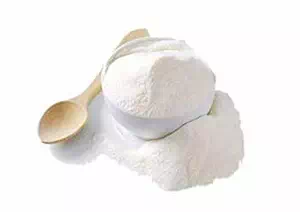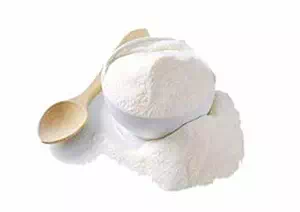All Categories


Propyl Gallate CAS 121-79-9, Propyl Gallate, CAS 121-79-9
Propyl gallate (CAS 121-79-9), as a highly efficient oil-soluble antioxidant, is irreplaceable in food (especially oil products), medicine and cosmetics due to its ability to block lipid oxidation.
CAS : 121-79-9
Formula : C10H12O5
Mol. wt. : 212.2
EINECS : 204-498-2
| CAS | 121-79-9 |
| Molecular formula | C10H12O5 |
| Molecular weight | 212.2 |
| EIENCS | 204-498-2 |
| Form | powder |
| Melting point | 146-149 °C(lit.) |
| boling point | 312.03°C (rough estimate) |
| Density | 1.21 |
| Solubility | ethanol: 50 mg/mL |
| PKA | / |
| Color | / |
| Storage temp | Store below +30°C. |
Propyl gallate (CAS 121-79-9), as a highly efficient oil-soluble antioxidant, is irreplaceable in food (especially oil products), medicine and cosmetics due to its ability to block lipid oxidation. Its advantages include:
Safety: Low toxicity (GRAS certified), but should be avoided in infant food and high-temperature processing scenarios. Synergistic effect: When compounded with BHA/BHT, it can enhance the effect and reduce the dosage of a single dose.
Usage Precautions:
Avoid contact with iron/copper containers (to prevent discoloration);
High-temperature resistant antioxidants (such as TBHQ) should be replaced in baked goods.
1.Food Industry (Core Application)
Function: Oil-soluble antioxidant, interrupting the auto-oxidation chain reaction of oils and fats.
Permitted dosage (GB 2760 standard) :
Maximum addition amount for food category (g/kg)
Oils and fried foods: 0.1 (calculated by total fat)
Cured meat products and dried fish products: 0.1
Biscuits, instant noodles, quick-cooking rice: 0.1
Canned nuts, chewing gum candies: 0.1-0.4
Synergistic effect: When combined with BHA, BHT or citric acid, the antioxidant effect is enhanced.
2. Medicine and Cosmetics
Medicine: Protect liposoluble drug components and delay oxidation and deterioration.
Cosmetics: Antioxidants in face creams and essences (to prevent UV damage, with an addition amount of 0.2% - 5%).
3. Other fields
Feed: Protect unsaturated fatty acids and extend the shelf life (addition amount ≤0.01%).
Industry: Antioxidant stabilizer for lubricating oils and textiles.
Toxicity data:
Oral LD₅₀ in rats: 3600 mg/kg (low toxicity)
ADI value: 0-1.4 mg/kg (FAO/WHO)
Health risk:
Skin/eye irritation (GHS labels: H315, H319)
Suspected carcinogenicity (IARC Group 3), prohibited for use in infant and toddler food
Storage requirements: Keep away from light and sealed, temperature ≤30℃, and keep away from metal ions.
* Prompt reply and 24 hours online, professional team to provide best price and high quality product.
* Sample testing support.
* Every batch of products will be tested to ensureits quality.
*The packing also can be according the customers` requirment.
*Any inquiries will be replied within 24 hours.
*we provide Commerical Invoice, Packing List, Bill of loading, COA , Health certificate and Origin certificate. If your markets have any special requirements, let us know.